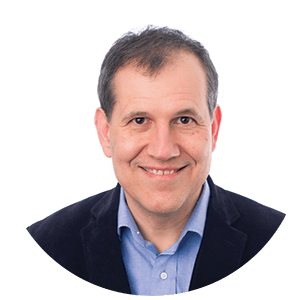NeuroStar® TMS Therapy
FDA-cleared, non-medication depression treatment
(855) 940-4867

Medically reviewed on by
Regional Medical Director Greater St. Louis
So many of us are used to those familiar names we associate with antidepressants: Zoloft®, Prozac®, Celexa, Paxil. The x’s and z’s roll off our tongues with little effort. These selective serotonin reuptake inhibitors (SSRIs) have been the most popular and commonly prescribed antidepressants since the late 1980s. Along with non-SSRIs like Wellbutrin and Cymbalta, these mostly oral antidepressants have served as the scaffolding for the nation’s mental health treatment for so long that the idea of taking psychedelics for depression and anxiety may feel absurd. But is it?
In 2019, the Food and Drug Administration (FDA) approved nasal esketamine spray SPRAVATO® for treatment-resistant depression and then for major depressive disorder with acute suicidal ideation or behavior in 2020.
Derived from ketamine, a dissociative anesthetic drug with hallucinogenic properties, this treatment is the closest the United States has come to implementing psychedelics for depression. Still, ketamine is more of a psychedelic-like medication, not a psychedelic in the same sense as psilocybin or LSD (lysergic acid diethylamide).
Could
those
psychedelics eventually become the leading antidepressants?
Standard antidepressants, such as SSRIs, tricyclic and tetracyclic antidepressants, and monoamine oxidase inhibitors (MAOIs), all work to elevate the levels of monoamine neurotransmitters in the brain. Serotonin, dopamine, norepinephrine, and epinephrine (adrenaline) are all monoamines. They help regulate mood, emotion, the fight-or-flight response to fear, attention, memory, sleep, and function.
According to the monoamine hypothesis, depression is a result of low monoamine levels in the central nervous system. Because standard antidepressants increase monoamines, they can help treat depression symptoms. Unfortunately, antidepressants can take weeks to kick in, and around one-third of people taking antidepressants will continue to experience symptoms during standard antidepressant treatment.
Put simply, depression is a complex condition, and the monoamine hypothesis can’t explain every case.
This is where psychoactive antidepressants come in. Ketamine and psychedelics for depression and anxiety have been shown to act more quickly to relieve symptoms of depression. Importantly, while ketamine is a dissociative drug, it is not a classic psychedelic like LSD or psilocybin.
In addition to elevating monoamine levels, ketamine and psychedelics for depression work by acting on amino acid neurotransmitters. They increase neuroplasticity by impacting the most prolific excitatory neurotransmitter, glutamate, which helps us perform cognitive functions pertaining to memory, learning, and thinking.
Ketamine and psychoactive antidepressants also act on gamma-aminobutyric acid (GABA), an amino acid neurotransmitter that regulates brain activity and helps prevent issues with anxiety, depression, sleep, irritability, and concentration. Perhaps because of the way they impact the brain differently than standard antidepressants, psychedelics have been shown to have a more lasting effect.
A
study in the February 2022 issue of the Journal of Psychopharmacology reported that after two carefully controlled doses of psilocybin spaced two weeks apart, 75% of participants reported improved symptoms. Even more encouragingly, 58% of participants were still in remission from depression at the 12-month mark.
Psilocybin has yet to gain FDA approval for treating depression, but this study highlights the important relationship between psychedelics and depression treatment. Unlike standard antidepressants, which must be taken every day and can come with side effects, psilocybin appears to relieve symptoms after one or two doses. With psilocybin and other psychedelics, as well as ketamine, side effects tend to last only during the treatment session and end shortly thereafter.
A caveat is that due to the minuscule but worrisome risk of developing psychosis after taking dissociative or psychoactive medications, psychedelics and ketamine may not be appropriate for people with a family history of psychosis.
Like psychedelics, ketamine can cause dissociation and hallucinations, and the two types of medications work similarly to improve symptoms of depression. However, psilocybin, LSD, and other psychoactive antidepressants do this by completely overriding the brain’s inhibitory framework. Ketamine, on the other hand, relaxes it.
The overriding is why classic psychedelics produce a much stronger and less relaxing “trip.” In studies on psychedelics and depression, patients go through much longer treatment sessions with psilocybin than with ketamine. The observation period after psilocybin treatment is six hours, for example, compared to the two-hour waiting period after ketamine treatment.
However, psilocybin’s more intense nature may give it an edge over ketamine. When a patient undergoes FDA-approved nasal esketamine spray treatment, they start out with two treatment sessions a week for four weeks, followed by once-weekly sessions for another four weeks. After this, they may come in for nasal esketamine treatment once every week or two to maintain remission from depression.
Psilocybin can be effective after far fewer doses, and its positive effects may last longer than nasal esketamine spray.
The difficulty, of course, is that psilocybin and LSD are Schedule I controlled substances, meaning that they have a high potential for abuse, and the FDA currently does not recognize any medical benefits they may have. Ketamine, on the other hand, is a Schedule III controlled substance, which means it holds the potential for abuse but has recognized medical benefits.
Psilocybin is also beginning to gain traction as a legitimate psychoactive antidepressant. The state of Oregon decriminalized psilocybin and approved its therapeutic use in 2020. Cities such as Denver, Colorado; Oakland and Santa Cruz, California; Washington, D.C.; and Somerville, Massachusetts have also decriminalized psilocybin.
Because they are fast-acting and long-lasting, psychedelics for depression may be a game-changer for mental health. However, FDA approval may not come until 2025 or later, and even then, the stigma of psychedelics may pose a roadblock to widespread psychoactive antidepressant treatment.
While the future is promising, we are still in the experimental phase for psychedelics and depression. Even now, we lean on standard antidepressants as we explore new options. For example, nasal esketamine spray (SPRAVATO®) must be taken alongside an oral antidepressant.
The good news is that nasal esketamine spray, which works similarly to psychedelics, is FDA approved, covered by insurance, and available at Greenbrook. We offer
nasal esketamine spray consultations, along with transcranial magnetic stimulation (TMS) treatment for those who would rather not try nasal esketamine spray.
Learn how TMS works here.
To get started with nasal esketamine,
schedule a free consultation with Greenbrook. We look forward to helping you find relief from depression.
Take our short quiz to see if TMS therapy or nasal esketamine could be right for you
Subscribe for mental health, self-care, and TMS therapy and nasal esketamine updates for those affected by treatment-resistant depression or OCD.
Thank you for subscribing to our email list!
Oops, there was an error adding your subscription.
Please try again later.
By providing your email address, you are consenting to receive blog updates from Greenbrook TMS Inc. You may unsubscribe from these alerts at any time by following the “unsubscribe” link at the bottom of email alerts. At Greenbrook TMS Inc. we take the privacy and security of your personal information seriously. To learn more about how we protect your personal information, please refer to our Privacy Policy.



Greenbrook supports an accessible internet. If you have any questions about our accessibility features, please contact us at
(855) 940-4867 or info@greenbrooktms.com.
All Rights Reserved | Greenbrook TMS NeuroHealth Centers.